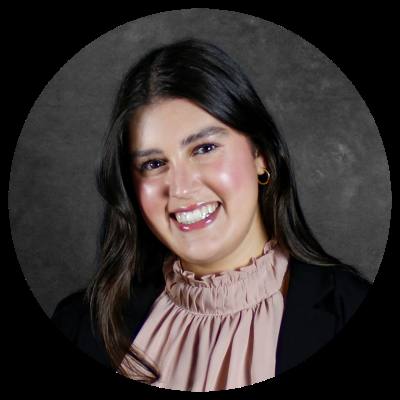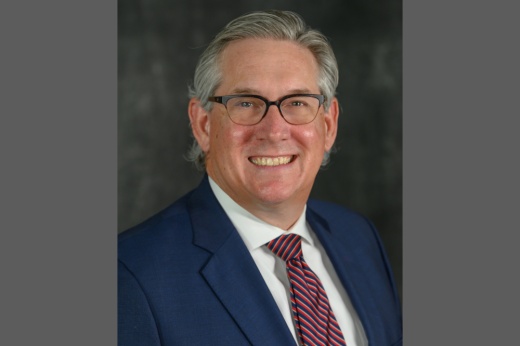Before joining the commission, Daniel served as executive director for the Texas Economic Development division of the governor’s office. Daniel spoke with Community Impact about the services TWC offers to Texans, how Texas’ workforce has bounced back from the pandemic and the challenges some job-seekers face. This interview was edited for length and clarity.
What does the Texas Workforce Commission do?
The Texas Workforce Commission is a state agency, and we have a lot of different areas that, by law, we're supposed to work in. One that a lot of people know us for is our workforce division. We help people look for jobs and help employers fill the jobs that they have [available].
We're also the state's administrator for the Unemployment Insurance Benefits fund. We oversee child care subsidies for working parents and also oversee the state's work in what we call vocational rehabilitation. That is a number of different programs for Texans who have one of several types of disabilities—like blindness, deafness [and other] disabilities—and we help them get situated into the workforce. It sometimes takes a little bit [of] extra [time] for someone experiencing a disability to find their niche in the workforce, so we're able to work with them one-on-one through some counselors.
In addition to those things, we work with a lot of schools in some of their training programs—again, trying to bridge the gap between employees and employers—and we do the same thing for veterans and foster youth.
Everything's geared toward making sure that every Texan that wants a job has the ability to get that job, and that every employer who is trying to hire a Texan to [fill] a job has someone that they can hire for that job.
What are some of the resources the commission offers to job-seekers and employers?
There's a network of 28 Workforce Development Boards that are kind of retail-level service for Texans who are wanting help from the workforce system. In a lot of ways, they're separate from [the TWC]—they’re formed separately, and they have separate governance, but we provide a lot of their funding through some federal funds that we receive.
What they do on the ground and what we can do via the internet is provide some job searching tools for people. Our WorkInTexas platform is a good example of that: it’s an online tool where you can see what jobs are available. But at the same time, your local workforce board can really advise you in terms of how those employers are interviewing for those jobs and how they're taking applications.
Employers use those same workforce boards to help fill their jobs—so there’s some matchmaking that’s going on. Many of these workforce boards coordinate different types of hiring fairs around the state [to help provide] that one-on-one contact.
You can also access something like child care subsidies and the vocational rehabilitation program through your workforce board. You can also call TWC directly for any of those things, and we're going to [connect you] with the person that's closest to you who’s providing that sort of concierge-level help. You’ll have somebody that is your person, that helps you navigate all this government stuff that's out there. Most of [the boards] have multiple offices, meaning there's an office pretty close to somebody who may need those services.
Who makes up the Workforce Development Boards?
The board of directors is selected from the counties that they serve, and there’s also a TWC person on each board. But most of those board members come from the local area; they know and understand that local area. [The board members] come from different sectors of the workforce—so there's someone looking out for the interests of employers; there's someone looking out for the interests of employees, and different folks for [local] nonprofit groups, government, and more.
How does the TWC work with students and schools to help prepare young people for the workforce?
We work directly and indirectly with high school and community college students, and sometimes university students. I say that because we do provide some forms of direct assistance in terms of job search, and we work with career centers at universities and community colleges.
But one of the biggest things we do, most students probably aren't aware of. [We] set up facilities and training programs specific to high-demand, and often high-salary jobs. The Jobs and Education for Texans program ... allows a school to apply for money to build a lab, facility or classroom to teach [career and technical education classes]. There, a student can learn what they need to get into a particular field and probably get some type of credentialing for that field.
Community colleges can participate in the JET program, just like public high schools can. But community colleges can also participate in the Skills Development Fund program, which lets them construct very specific training programs in partnership with employers, so we can make sure we're providing training programs that are aligned to be efficient and get you straight into the workforce [after graduation].
We probably work more with the schools [than] directly with students, but [most] of our workforce boards have designated career counselors that they send out to high schools [to] provide some guidance and strategy for students to use [in the workforce].
We also offer funding for some universities to [host] summer camps for technology, science and other programs. We think [these are] pretty useful, particularly for middle school students to start exploring technology careers now. [Technology is] an in-demand job and has been for the last 10 years. So rather than being a sophomore in high school, why not be a seventh grader and start learning about what's out there. Then you can start picking your course of study to get you there more quickly and efficiently.
How does the commission work with other state agencies to promote hiring, workforce development and more?
We spend a lot of time working with the Texas Education Agency, which covers K-12 instruction, and the Texas Higher Education Coordinating Board, which is the state agency with oversight for community colleges and universities. When you consider things like the TWC’s child care programs, these three organizations really might have the opportunity to help people from age three months until potentially age 65, depending on where they are in the workforce.
But the core of that [work] happens from about third grade through about your sophomore or junior year [of college]. That's when you're going to take the bulk of your training, so we spend a lot of time working with those other two agencies through something called the Tri-Agency Workforce Initiative. We're dealing with a lot of the same constituents, and we just want to make sure that everybody has what they need in terms of being competitive in the workforce.
And we work [with agencies] outside of that. For example, there's a need for more nurses in the state, so we've been working with the Board of Nursing. We work constantly with the Health and Human Services Commission, particularly as it relates to our child care and vocational rehabilitation programs. We work with agencies across the state on a project-by-project basis to help [job] applicants and employers.
Issues like high unemployment rates have largely stabilized since the COVID-19 pandemic began in 2020. What is the TWC’s role in dealing with this kind of workforce issue?
[Texas] lost about 1.5 million [jobs] due to the pandemic. In November of last year, we had added all of those jobs back. So we've been operating for nearly a year now in an expansion mode. In fact, we've probably got nearly half a million more jobs in the economy today than we had a year ago.
Employers have been adding jobs at a rapid rate. At the end of September, for example, 10 of our 11 primary industries either have recovered or will soon recover all of the jobs that they had pre-COVID[-19]. That includes restaurants; that includes leisure and hospitality. Government, as well as a catch-all category called “other services,” are the only ones still on the cusp of going beyond their COVID[-19] numbers.
A point that I keep seeing is that there's no one to work in the restaurant industry. But there are more people employed in the restaurant industry right now than there were before the pandemic, which means the pressure we're seeing on the leisure hospitality industry is organic growth. [There are] more restaurants opening, and [existing] restaurants are growing or adding staff.
For a long time, COVID[-19] was the reason that businesses had a hard time hiring people. About a year ago that sort of went away as the primary reason. It is still secondary, because some business owners suffered more than others during [the pandemic]. But when we look at industry groups as a whole, what we see is a fairly significant recovery in Texas. We lead among the large states in terms of how much we've recovered. Not only do we have a half a million more jobs in the economy today than we had pre-COVID[-19], we're setting records within each of those industries. There are more people working for a salary today in Texas than ever before in the history of the state.
What challenges does Texas currently face related to the workforce?
There are not enough Texans that have the right kind of training after high school to fill all the jobs that are available right now. There are about 550,000 open jobs in the state, and we’ve probably paid out a similar number of people in unemployment benefits. A lot of people would say that if you have the same number of unemployed people, you should just match them up [with open jobs]. But we can’t do that, due to a training issue—jobs just get more complicated [over time].
Technology is moving at a much more rapid rate than it ever has before, so people’s training doesn’t always keep pace with what’s going on in the workforce, particularly if they don’t have the time or money to go back to school. I’m not talking about college degrees—I’m talking about a single certificate or a couple of certificates that you can get at night from a community college. If you’re making $15/hour working retail, you might be just a couple of certificates away from a job with better hours, better pay and more time at home with your family.
I think a lot of people feel like they're stuck in their job, because that's the job they have. Because [other jobs] seem unattainable, but I don't think they are, because we’ve got great community colleges in every area of the state. I think there are opportunities for people to get more training in this middle skills area and to be able to use that for more jobs. The takeaway for anybody should be this: don't get your high school diploma and think necessarily that you’re done. But don’t think that you’ve got this long, boring slog to get more training. It can literally be one or two more courses, or it could be a more [specific] course of study, like becoming an electrician or a welder. There’s good money in those jobs, and there are a lot of opportunities [available] right now for people.





